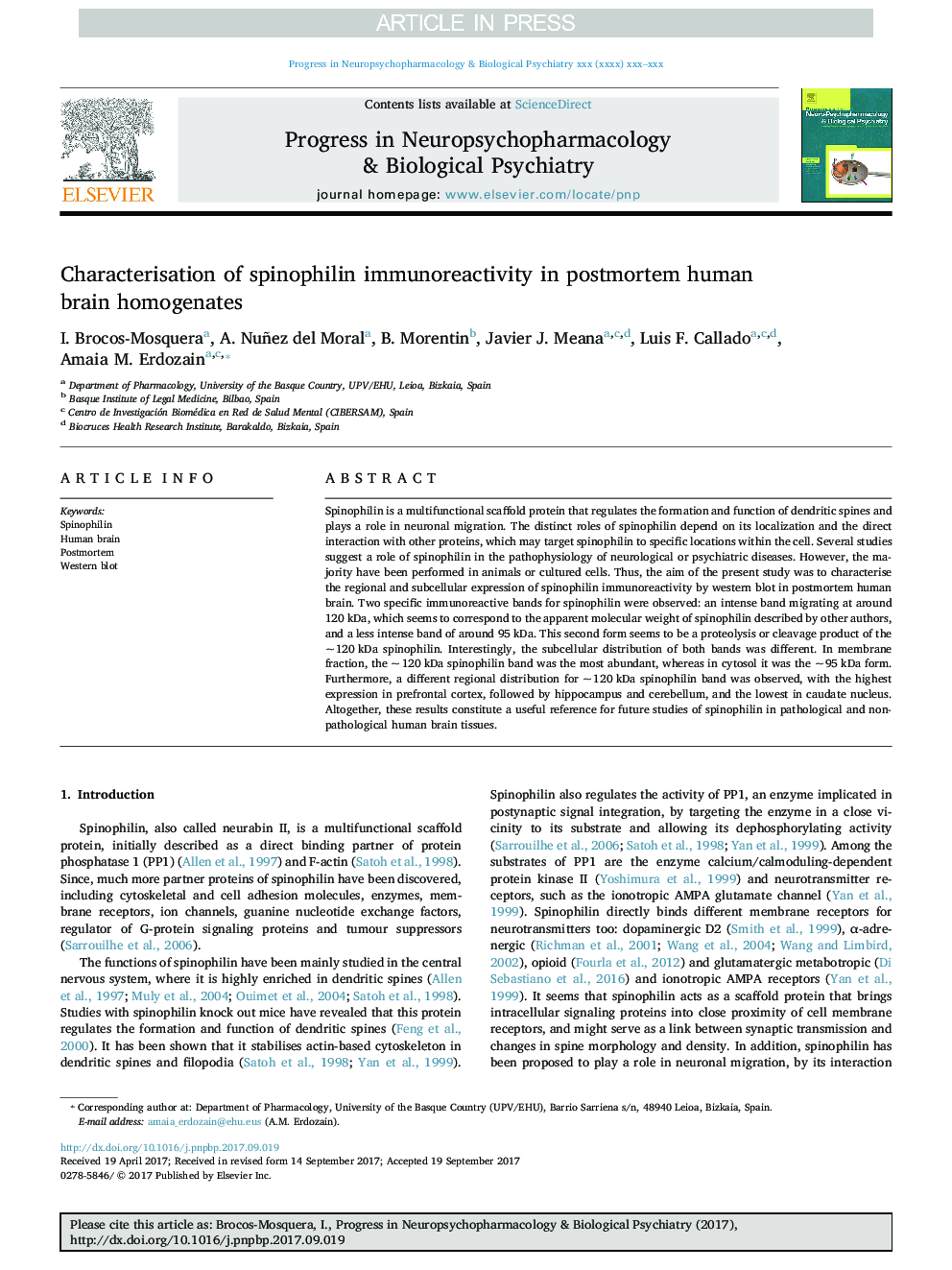| Article ID | Journal | Published Year | Pages | File Type |
|---|---|---|---|---|
| 8537517 | Progress in Neuro-Psychopharmacology and Biological Psychiatry | 2018 | 7 Pages |
Abstract
Spinophilin is a multifunctional scaffold protein that regulates the formation and function of dendritic spines and plays a role in neuronal migration. The distinct roles of spinophilin depend on its localization and the direct interaction with other proteins, which may target spinophilin to specific locations within the cell. Several studies suggest a role of spinophilin in the pathophysiology of neurological or psychiatric diseases. However, the majority have been performed in animals or cultured cells. Thus, the aim of the present study was to characterise the regional and subcellular expression of spinophilin immunoreactivity by western blot in postmortem human brain. Two specific immunoreactive bands for spinophilin were observed: an intense band migrating at around 120Â kDa, which seems to correspond to the apparent molecular weight of spinophilin described by other authors, and a less intense band of around 95Â kDa. This second form seems to be a proteolysis or cleavage product of the ~Â 120Â kDa spinophilin. Interestingly, the subcellular distribution of both bands was different. In membrane fraction, the ~Â 120Â kDa spinophilin band was the most abundant, whereas in cytosol it was the ~Â 95Â kDa form. Furthermore, a different regional distribution for ~Â 120Â kDa spinophilin band was observed, with the highest expression in prefrontal cortex, followed by hippocampus and cerebellum, and the lowest in caudate nucleus. Altogether, these results constitute a useful reference for future studies of spinophilin in pathological and non-pathological human brain tissues.
Related Topics
Life Sciences
Neuroscience
Biological Psychiatry
Authors
I. Brocos-Mosquera, A. Nuñez del Moral, B. Morentin, J. Javier Meana, Luis F. Callado, Amaia M. Erdozain,
